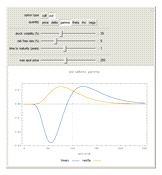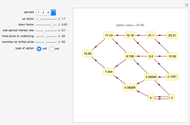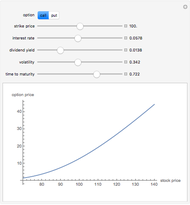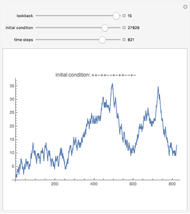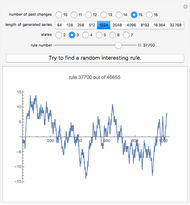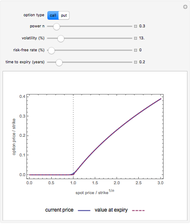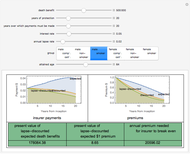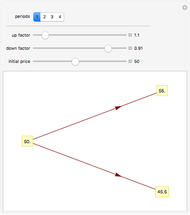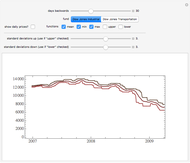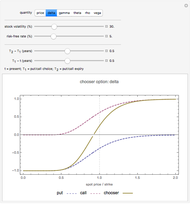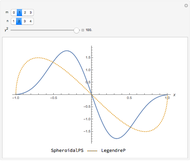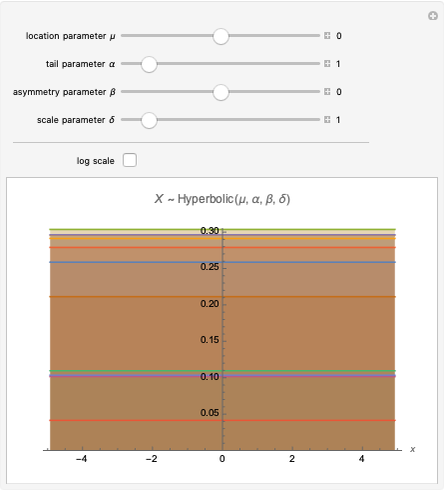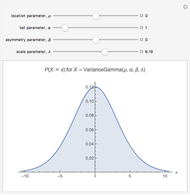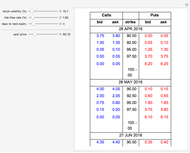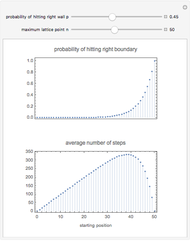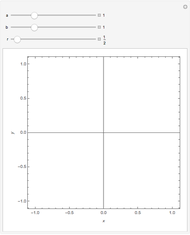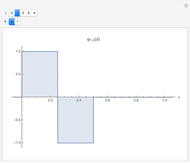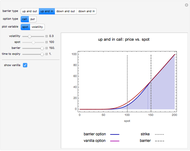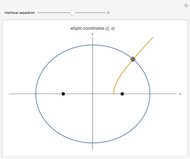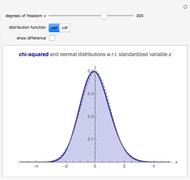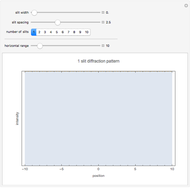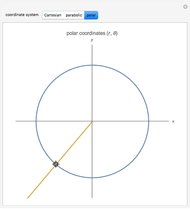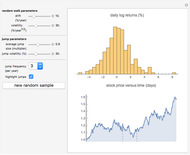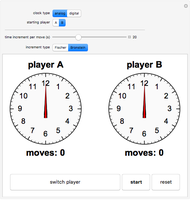Binary Options: Pricing and Greeks

Requires a Wolfram Notebook System
Interact on desktop, mobile and cloud with the free Wolfram Player or other Wolfram Language products.
This Demonstration shows the price and "Greeks" for binary call and put options together with the corresponding vanilla European option as a function of underlying spot price (the option strike price  is set to 100). The controls let you explore the effect of the model's input parameters.
is set to 100). The controls let you explore the effect of the model's input parameters.
Contributed by: Peter Falloon (July 2009)
Open content licensed under CC BY-NC-SA
Snapshots
Details
Binary options are a type of exotic option for which the payoff is determined by whether the final stock price  is greater or less than the strike price
is greater or less than the strike price  . A binary call option pays out if
. A binary call option pays out if  , while a binary put option pays out for
, while a binary put option pays out for  . In this Demonstration we set the payoff amount to be the strike price
. In this Demonstration we set the payoff amount to be the strike price  .
.
As this Demonstration shows, the price of binary options—and its derivative with respect to the various model inputs—displays some interesting differences compared to the more well-known behavior of European options. For example, the "delta" of at-the-money binary options becomes very large close to expiry, which in practice makes such options difficult to hedge (Snapshot 1).
Another example is the "theta" of binary calls, which can be positive when the option is "in the money" (that is, when spot  strike); by contrast, the theta of European options is always negative (Snapshot 2).
strike); by contrast, the theta of European options is always negative (Snapshot 2).
J. C. Hull, Options, Futures, and Other Derivatives, Upper Saddle Creek, NY: Prentice Hall, 2006.
Permanent Citation



